Many people love living on water. This can reduce the negative effects of heat, and improve the residents’ well-being. Floating houses combine “home” and “boat” into an all-weather lovable design that is flexible and adaptable to different water levels, which makes them very effective in dealing with floods. So, will you take the plunge?
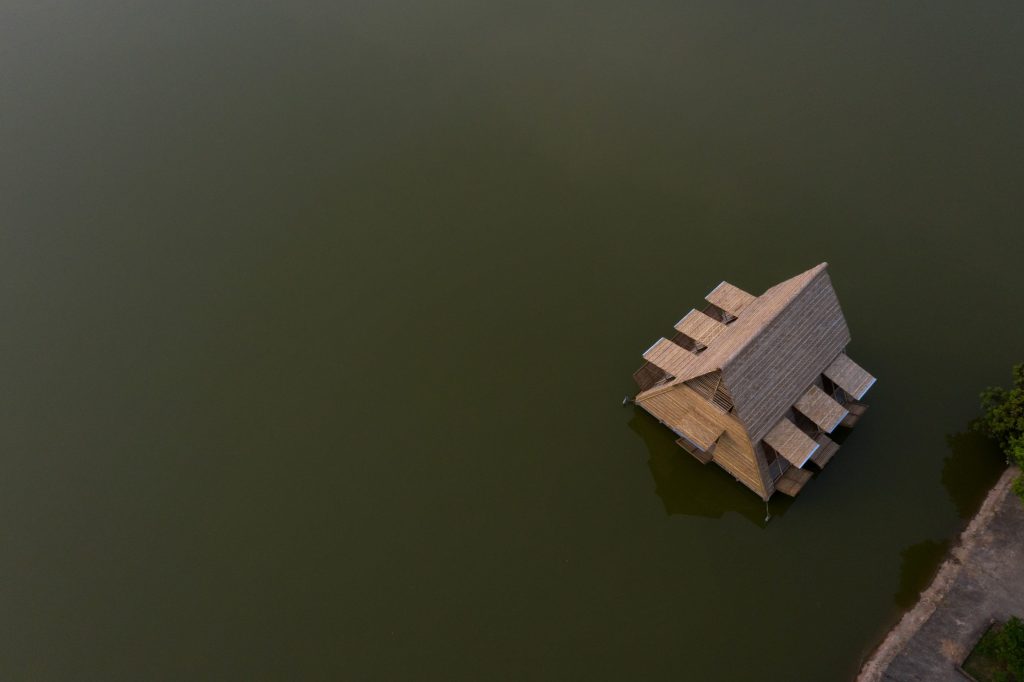
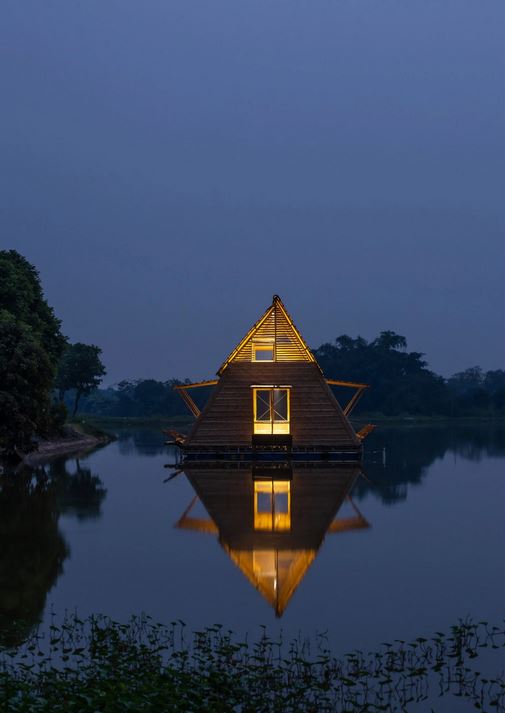
Floating Bamboo House by H&P Architects (also header image)
With climate change continuing apace, the advantages of a floating house are obvious. Vietnamese studio H&P Architects has created a prototype for a floating home made of bamboo that is designed to withstand rising sea levels. Named Floating Bamboo House, it aims to provide locals living in and around the Mekong Delta in Vietnam, one of the hardest-hit countries in the world by climate change, with a useful alternative to create a stable and safe accommodation themselves.
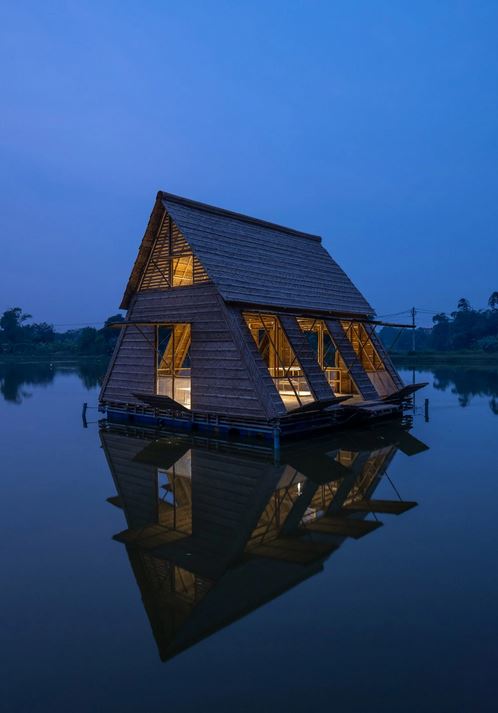
Floating Bamboo House by H&P Architects
Externally, the design is inspired by the vernacular Rông house, a traditional and rural Vietnamese building typology with a tall, steep thatched roof. It is made of locally sourced solid-cored bamboo pieces joined together with latches and ties to create the structural frame of the building. The facades are covered with lightweight bamboo screens, woven bamboo sheets, leaves and corrugated iron. Plastic drums attached to the underside of the house enable it to float.
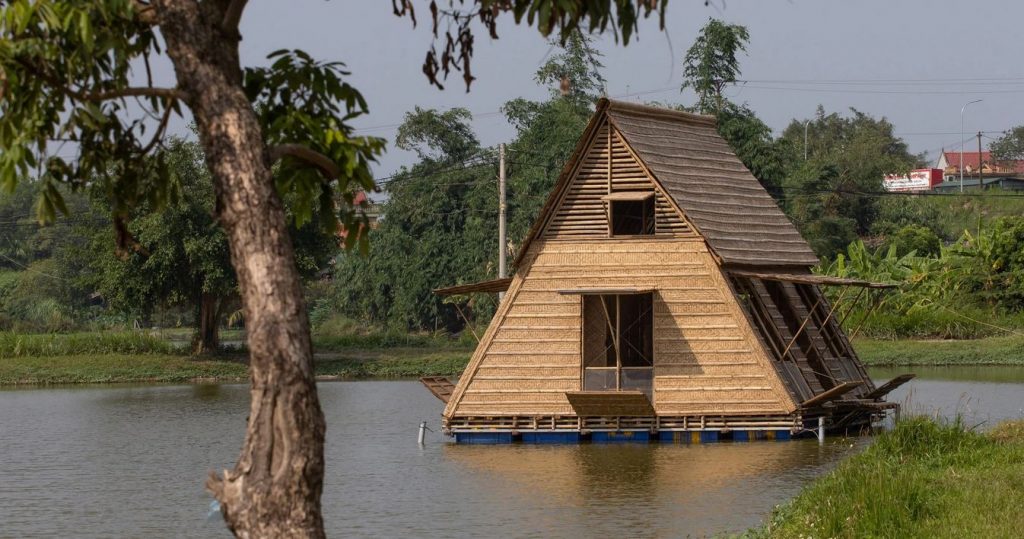
Floating Bamboo House by H&P Architects
Sustainable features of the house include a large roof that allows occupants to collect rainwater and harvest solar energy.
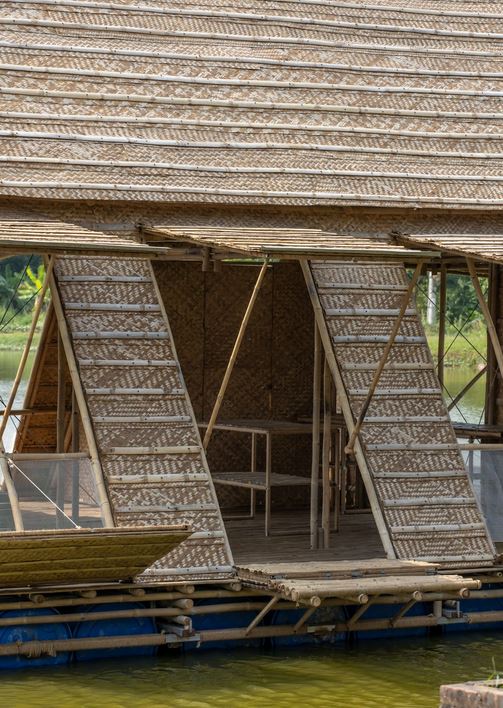
Floating Bamboo House by H&P Architects
Several houses can be connected with each other by floating playing grounds, vegetable-growing rafts and fish-raising areas, which would enable locals to form climate-resilient floating villages.

Nautilus house boat
Designed, engineered and built in Berlin, the innovative Nautilus house boat lets city dwellers escape the urban jungle and take a journey across the water, so they are no longer trapped inside their conventional dwellings.
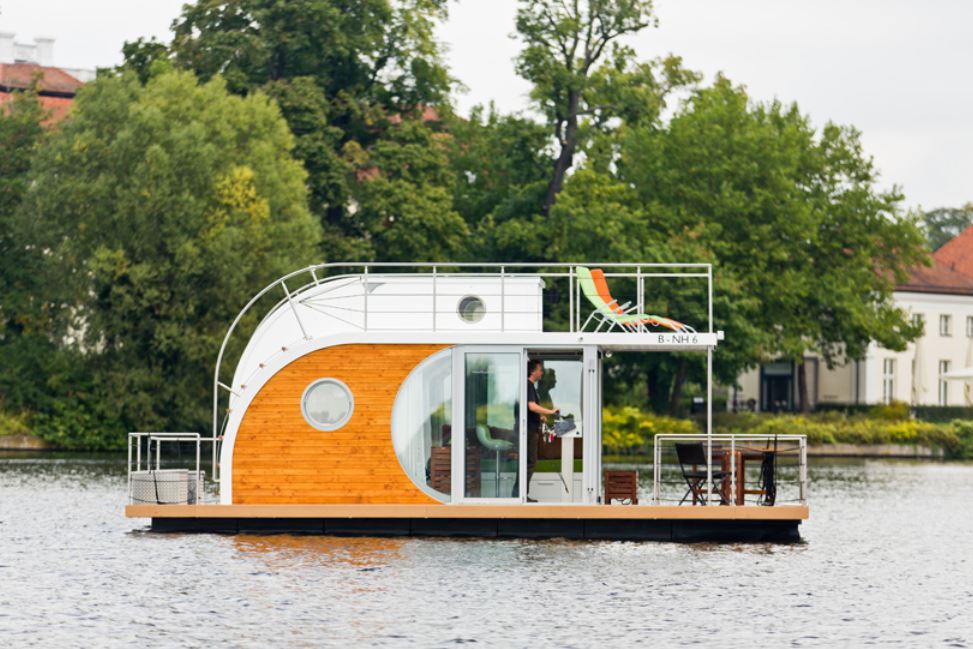
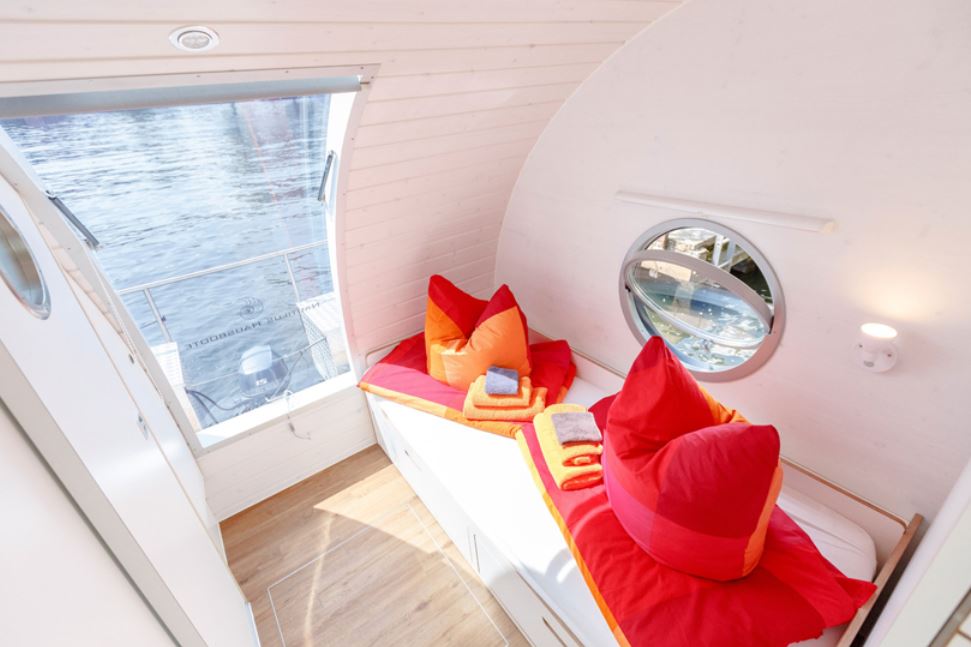
Nautilus house boat
Transformed from a simple hideout to a modern house, Nautilus comes with ample space, a full deck for relaxation, natural wooden floors, and a top deck that can be used for sunbathing. Upon request, owners can specifiy for their floating home to even feature a sauna.
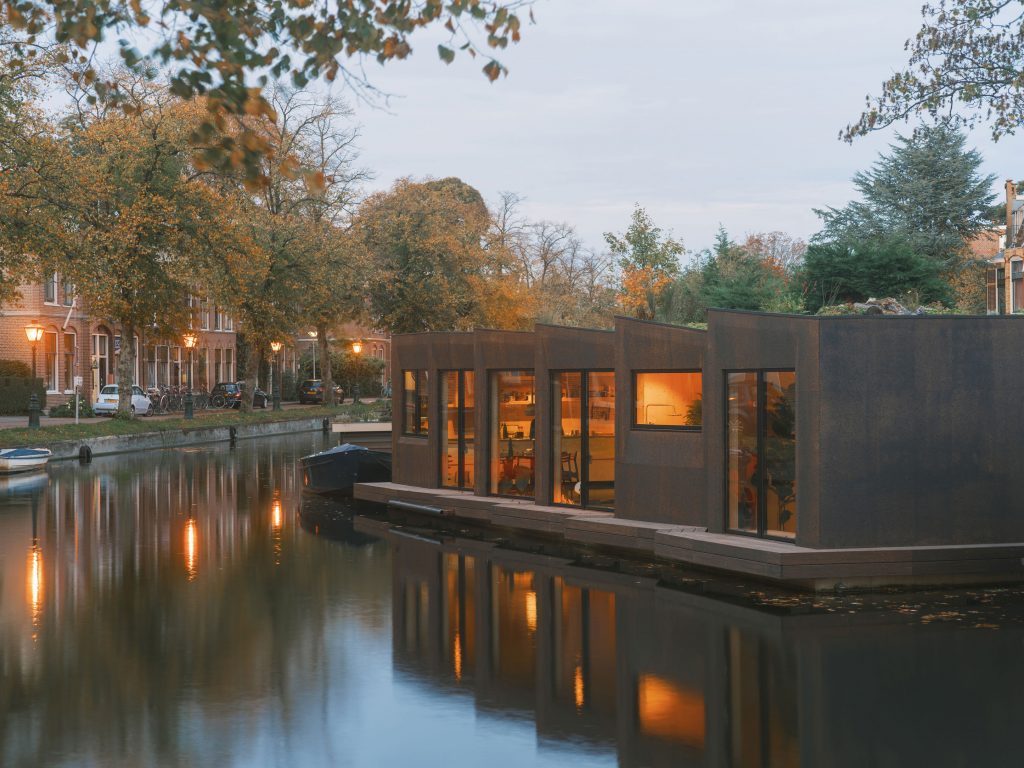
The Float by Studio RAP
Commissioned to design an innovative and sustainable floating home along the picturesque canals in the historical city of Leiden, Netherlands, Rotterdam-based architecture firm Studio RAP has created a design that takes inspiration from origami-principles and folded structures. The Float is a sustainable floating home built of Cross-Laminated-Timber (CLT) and clad in expanded cork, a pure plant-based material with a unique ecological origin giving the building an exceptionally low carbon footprint.
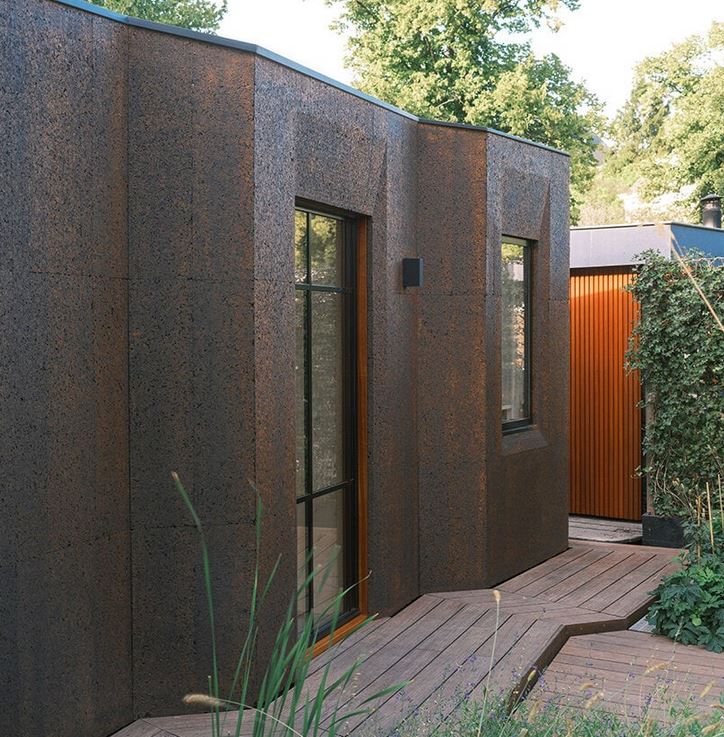
The Float by Studio RAP
To avoid a single floating container appearance, the architects designed a series of smaller modules that are rotated towards the lush nature on the opposite side of the canal. This results in greater spans with less material than more conventional forms of structure. Between the modules, extra panels were added and then folded to create intricate 3D corrugated walls.


The Float by Studio RAP
The folds were designed and parametrically optimized, which resulted in a reduction over two thousand kilograms of timber. The breathable walls of the structure comprise a multi-layered assembly of a low-density cork insulation layer and a high-density cork outer layer bonded by a cork mortar layer.


The Float by Studio RAP
The floating home has been completed by the architects entirely with digital techniques, including digital design, digital production and structural calculations. Still, sustainability was central in this digital workflow and guided most design decisions.